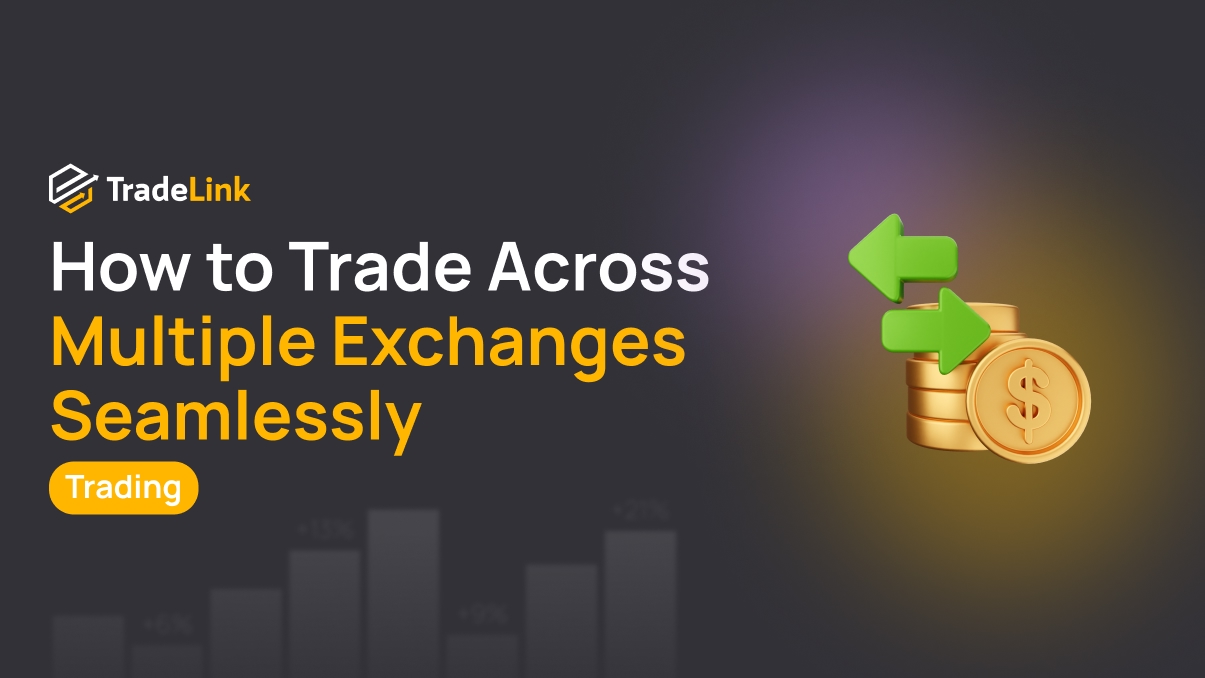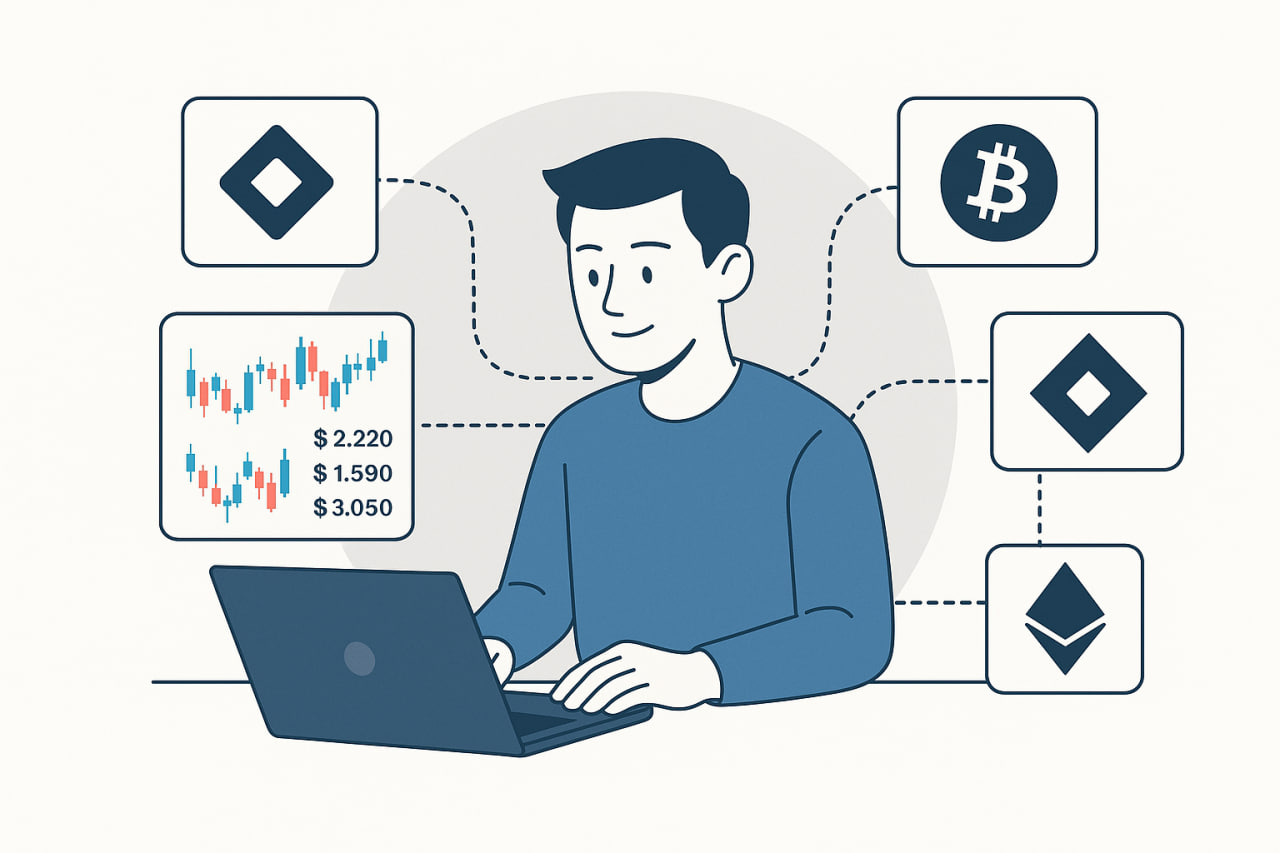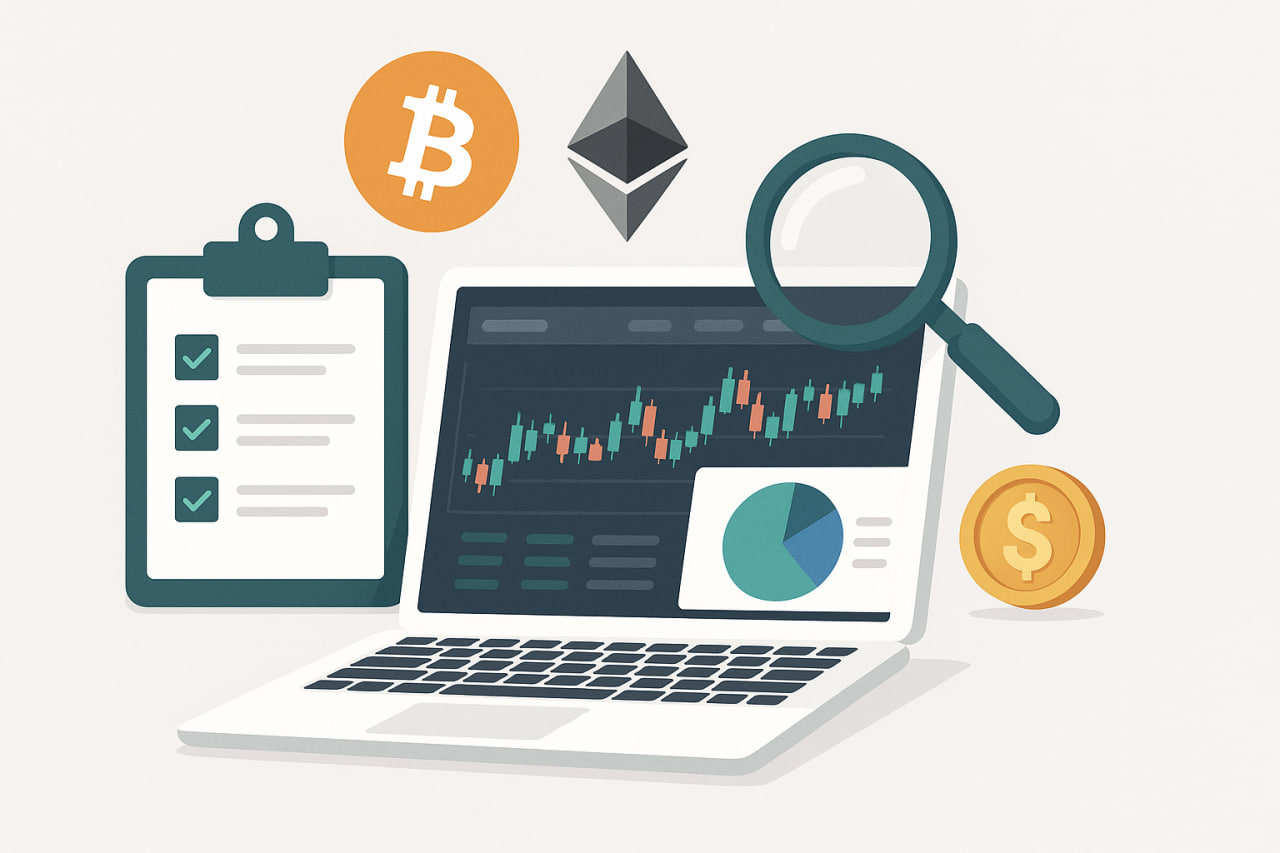Multi-Exchange Platforms: How to Trade Across Multiple Exchanges Seamlessly

Contents
- Introduction
- What Is Multi-Exchange Trading
- How Multi-Exchange Platforms Work
- How to Choose a Multi-Exchange Platform
- Advantages of Multi-Exchange Solutions
- Disadvantages and Challenges
- Best Practices
- The Future of Multi-Exchange Platforms
- Conclusion
Introduction
Multi-exchange crypto platforms emerged as a response to the growing interest in digital assets and active trading. Many traders noticed that keeping all funds on a single exchange is inconvenient and not consistently profitable.
To solve this problem, services were developed that allow trading on several exchanges simultaneously through a single interface. Such solutions help monitor portfolios, apply different trading strategies, and quickly find suitable opportunities.
What Is Multi-Exchange Trading

Multi-exchange trading is the practice of working with multiple cryptocurrency exchanges simultaneously through a unified platform. Unlike the traditional approach, where a trader is limited to the tools of a single trade, multi-exchange services provide access to multiple functions and markets simultaneously. This format offers greater flexibility and enables quicker adaptation to industry changes.
How Multi-Exchange Platforms Work
Multi-exchange platforms create a unified space where data from all connected exchanges is displayed. This is achieved through API keys, which are special digital keys that grant access to account information and enable trading operations.
After connecting to an exchange, the platform can request quotes, display balances, and manage orders. All information is collected in a single interface, including open positions, trade history, and asset allocation.
In addition, most services support automation tools:
-
Trading bots that execute trades under predefined conditions
-
Notifications about price changes
-
Algorithms that help build strategies based on data from different exchanges
Thanks to this, users save time and can focus on market analysis rather than routine actions.
Trading Through a Single Interface
Some multi-exchange platforms enable the management of trades and assets across multiple exchanges through a single panel. In this case, a trader can place orders, track balances, and control positions without constantly switching between different accounts.
Not all services offer this feature, and its availability depends on the level of integration with exchanges. But where it is implemented, users gain additional convenience: all key information is collected in one interface, saving time and reducing the likelihood of errors when working with multiple assets.
Automation of Multi-Exchange Trading

Modern multi-exchange services are actively developing automation features. A user can connect a bot or algorithm that executes trades according to predefined conditions.
For example, it is possible to set up automatic order placement once a certain price level is reached or to configure a risk management strategy. Automation enables faster market reactions than humans and reduces the likelihood of mistakes.
These tools are valued not only by experienced traders but also by beginners, for whom simplifying the trading process and focusing on learning strategies is especially important.
Popular Use Cases
Multi-exchange platforms are applied differently depending on the trader’s goals. For some, they serve as a tool for portfolio monitoring and analytics; for others, as a means to utilise automation and reduce workload. The common task for all users is to improve convenience and minimise errors when working with several exchanges.
Popular Multi-Exchange Platforms
Among popular solutions for trading and portfolio management, the following services can be highlighted:
-
TradeLink Passport — a multi-exchange trading analytics service. It provides accurate, customizable real-time statistics that include more than 50 indicators.
-
TradeLink Marketplace — a copy trading platform. Users can replicate the best strategies of top traders and connect them to their accounts, allowing trades to be executed automatically.
-
Bitsgap — a platform supporting multiple exchanges and trading bots, allowing users to manage portfolios and place orders within a single interface.
-
Altrady — a terminal for active trading. Suitable for those who operate on multiple exchanges simultaneously and need to react quickly to market changes.
-
Shrimpy — a service for automation and portfolio balancing, convenient for both beginners and experienced traders.
How to Choose a Multi-Exchange Platform

When choosing a multi-exchange platform, it is essential to consider several key factors. They determine how convenient and safe the work will be. In practice, attention is usually paid to the number of supported exchanges, interface quality, security system, and availability of automation tools.
What to evaluate in a platform:
Criterion | What to Check | Why It Matters |
Support of exchanges | Presence of large and popular platforms | Access to liquidity and a wider choice of assets |
Interface | Simplicity and clarity of the control panel | Faster work and fewer mistakes |
Security | API key protection, ability to limit permissions | Reduces the risk of losing funds |
Automation | Bots, signals, and algorithms | Ability to run strategies 24/7 |
Advantages of Multi-Exchange Solutions
Multi-exchange platforms offer several notable advantages:
-
Increased liquidity. Working with multiple exchanges simultaneously increases the number of available trading pairs and transactions.
-
Risk reduction. If one platform is temporarily unavailable, trading continues on the other platforms.
-
Portfolio management. All assets can be tracked in a single panel, simplifying analysis and supporting more informed decision-making.
Thanks to these advantages, multi-exchange services are steadily gaining a more prominent place in the toolkit of active traders.
Disadvantages and Challenges
Despite their convenience, multi-exchange platforms also have downsides:
-
API key security. Connecting to exchanges requires special keys. If compromised, they can pose risks, so it is essential to use trusted services and restrict permissions accordingly.
-
Technical delays. Sometimes data on prices or orders is updated with a short delay, which reduces the accuracy of trade execution.
-
Cost. Some professional solutions are expensive, which may be a barrier for beginners.
Best Practices
Even a convenient multi-exchange platform requires careful setup and configuration. To reduce risks, traders are advised to follow several rules:
-
Check reputation. Read reviews and ratings to ensure the service has a reliable track record.
-
Set up the API correctly. When connecting exchanges, restrict access rights by allowing only trading while disabling withdrawals.
-
Control risks. Begin with small amounts to test the platform’s stability, and then gradually increase trade volumes.
-
Stay updated. Developers regularly add new functions and enhance security, so using the latest version helps reduce potential problems.
These steps help safely connect multiple exchanges and make full use of multi-exchange trading opportunities.
The Future of Multi-Exchange Platforms

Multi-exchange platforms continue to evolve along with the cryptocurrency market. In the coming years, more technologies are expected that will make them even more functional.
One direction may be the adoption of more sophisticated algorithms capable of analysing the market faster than humans and accounting for dozens of factors. In addition, the use of artificial intelligence is gaining popularity. AI can forecast price movements, suggest effective strategies, and support risk management.
We can also expect the expansion of standard functions, including integrated portfolio trackers, improved notification systems, and new automation tools. All this will make multi-exchange services more versatile and valuable for both beginners and professionals.
Conclusion
Multi-exchange platforms hold a significant place in the cryptocurrency trading landscape. They enable trading across multiple exchanges through a single interface, allowing for portfolio management and automation.
As technologies develop, multi-exchange solutions will become even more in demand. They will offer traders greater flexibility, analytical tools, and methods for reducing risks. For active market participants, such services are already becoming an essential and practical part of daily work.